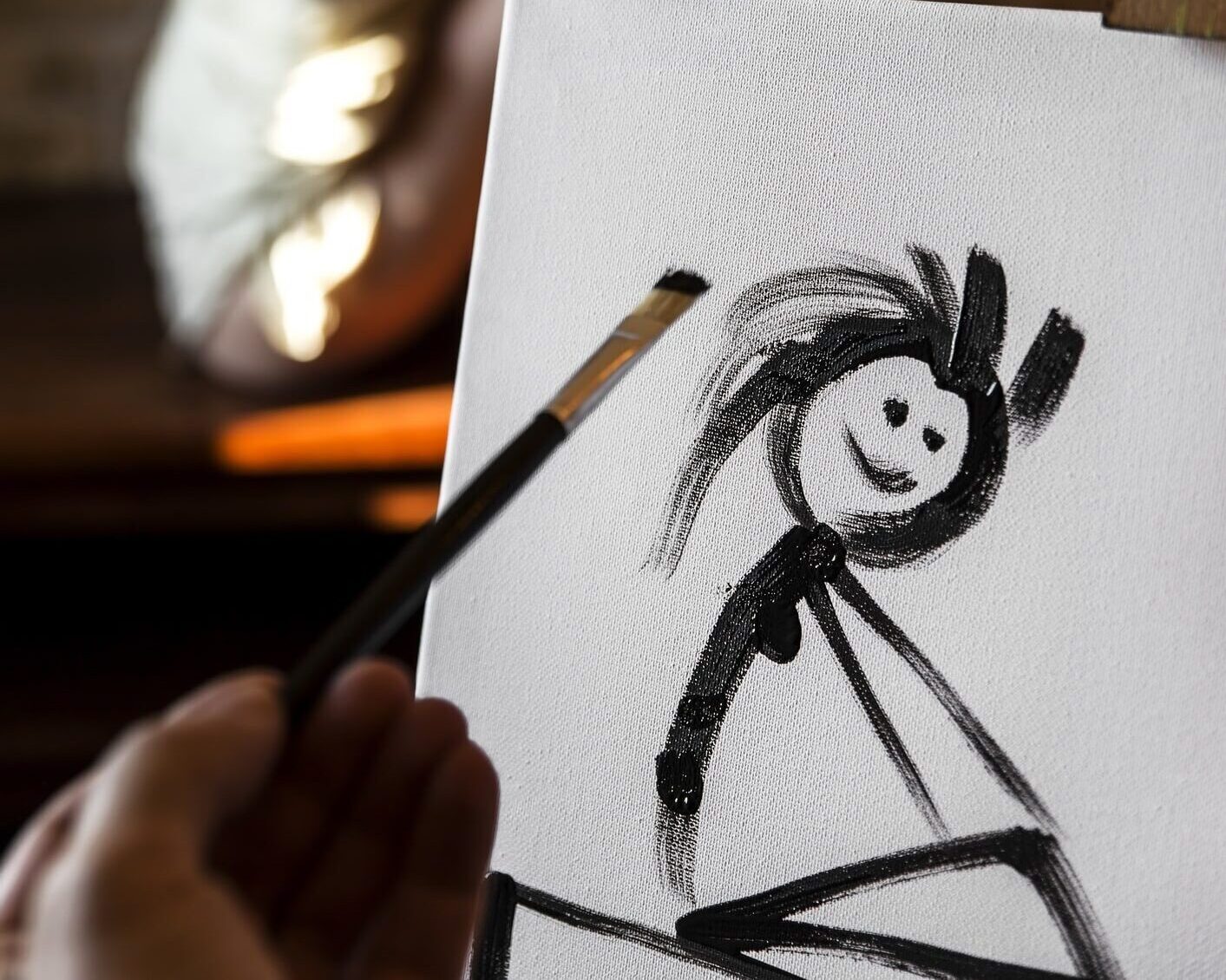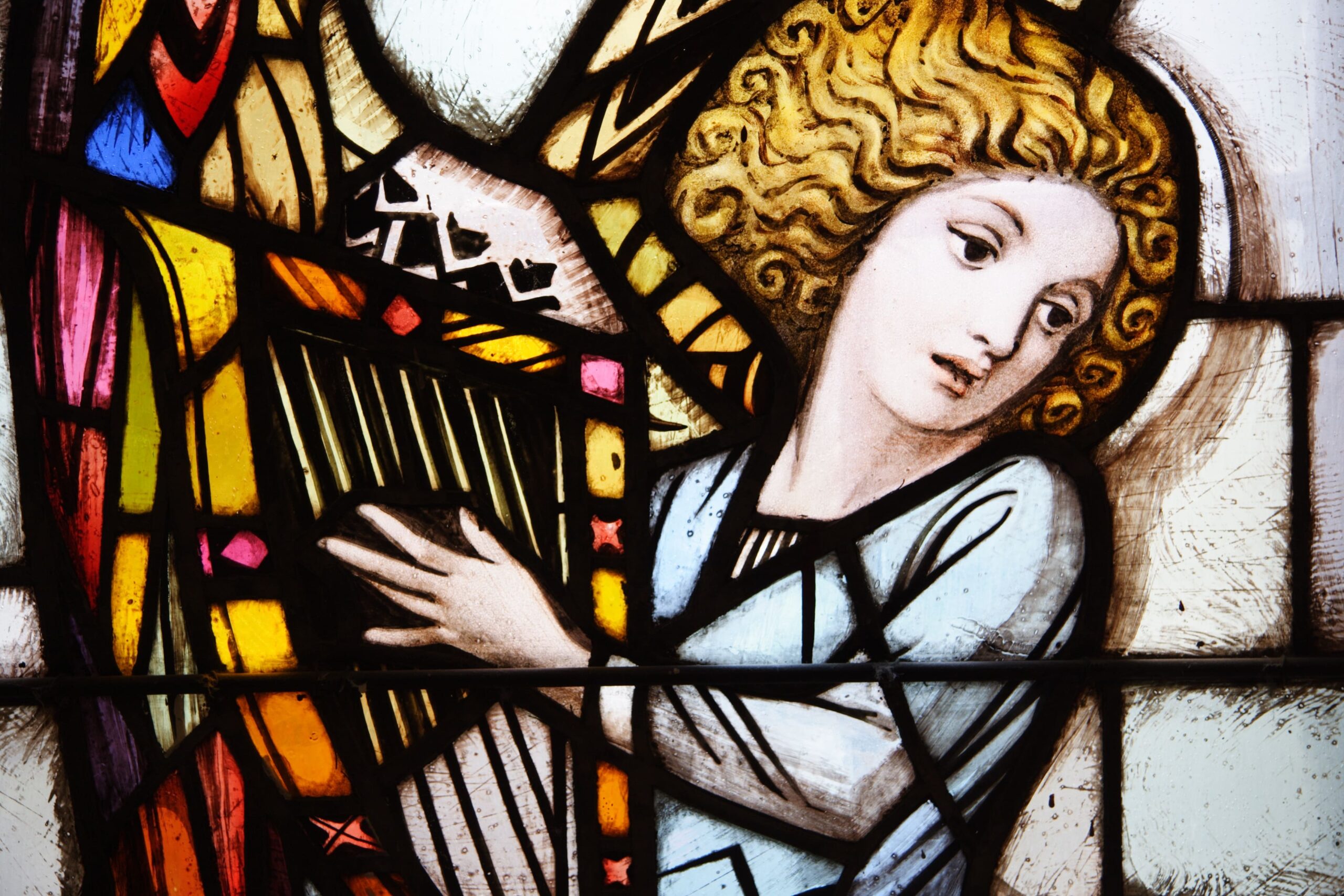To the average reader the name of American novelist Willa Cather conjures up images of the prairies, of frontier Nebraska, and of the nineteenth-century Southwest, the harsh and austerely beautiful landscapes of some of her best known novels, My Ántonia (1918), O Pioneers! (1913), and Death Comes for the Archbishop (1927). But Cather was a cosmopolitan—widely traveled, knowledgeable of languages, passionate for high art and culture, sophisticated in taste, and acute to the nuances of manners, customs, furnishings, and dress. Born in 1873, she worked from 1906–1911 as a writer and editor for McClure’s Magazine in New York City, and was to live in the city on and off for much of her life, mainly in Greenwich Village, and then on Park Avenue. From this experience come a clutch of enchanting stories and a couple of longer works that conjure up a world now lost yet tantalizingly still viewable today. These stories yield a wealth of fascinating details about New York in the late nineteenth and early twentieth centuries, but they are also remarkable for the way the city becomes one of their characters, part of the felt life of their imaginative worlds, much as was the case with the landscapes and settings of Cather’s Western fiction.
Set around the turn of the century and somewhat after, these stories portray New York as a place of unspeakable elegance and civilization, a contrast to the “raggedness” of the Western and Midwestern cities from which many of her characters come. In those years there was still a high degree of Englishness afloat in New York. People took tea, lived in flats, sat on sofas called Chesterfields. Social engagements might begin as late as ten o’clock. Gentlemen had men servants to help with their attire, donned smoking jackets at home, fastened their cuffs with “sleeve buttons,” wore top hats, gloves, and canes to breakfast out. Ladies, too, dressed with a degree of formality once they were “out of short dresses.” An outing in winter meant putting on one’s “furs,”and perhaps carrying a muff. Some of Cather’s characters are artists and divas who dress dramatically, in “a dark purple velvet carriage cape lined with fur and furred at the cuffs and collar,” for example, or in “black velvet with long black feathers and a lace veil” (in daylight).
The railroad that brought many young hopefuls from their prairie towns to the metropolis did not come into New York proper, but stopped in Jersey City, whence travelers would take a boat that crossed the river to 23rd Street. This entry formed a kind of vestibule in which the voyager might ponder his experience, as happened with Nellie Birdseye, the narrator of My Mortal Enemy (1926). Years after her visit Nellie remembers her first glimpse of the city as a young woman, and manages to make it seem almost as magical as something out of Arabian Nights:
The boat was pulling out, and I was straining my eyes to catch, through the fine, reluctant snow, my first glimpse of the city we were approaching. We passed the Wilhelm der Grosse coming up the river under tug, her sides covered with ice after a stormy crossing, a flock of sea-gulls in her wake. The snow blurred everything a little, and the buildings on the Battery all ran together—looked like an enormous fortress with a thousand windows. From the mass, the dull gold dome of the World building emerged like a ruddy autumn moon at twilight.
New York will also be the locus of Nellie’s education in the limits life can set to such portentous beginnings, a theme that courses throughout these stories. An ominous note sounds even in the passage itself, with its comparison of the city to a “fortress.” Further, the reference in the passage to the dome of the World Building alludes to the journalistic hegemony that once ruled New York and is still commemorated in its place names today—notably Times Square and Herald Square. A character in another of Cather’s New York stories, “Consequences,” can see the Times Building—which stood then on the narrow triangle that lies between 42nd and 43rd Streets on Broadway—all the way from the window of his “bachelor apartment house” on 58th Street.
Driven by the accelerating pace of commerce, business, and journalism, the New York of that time had surpassed Chicago as the first city of the United States, and Cather’s New York fiction explored how these forces affected the world of human scale going on beneath that rising skyline. One of the main characters in “The Bookkeeper’s Wife,” for example, a young man who pursues and captures a woman much too “sporty” for him, is pictured in his office, “crouched on his high stool and staring out at the tops of the tall buildings flushed with the winter sunset, at the hundreds of windows, so many rectangles of white electric light.” The city becomes a kind of crucible for Cather, where changes and contrasts could be examined, where dazzling possibilities are held out, pursued, attained, and sometimes lost, or found not to be what they seemed; where the extraordinary pace of change, especially in the early decades of the century that Cather wrote of, will offer enormous opportunity but also exact a price.
Another example, more in the comic mode, is the short story, “Ardessa.” The rapid beat of the twentieth century catches up with Ardessa, the eponymous heroine of an amusing short satire on the new muckraking journalism of the time. Ardessa Devine, a senior stenographer steeped in the editorial traditions of the 1880s and 1890s, faces a changed universe when her conservative editor, “out of place in the world of brighter, breezier magazines that had been flowering since the new century came in,” sells his publication to Marcus O’Mally, a young firebrand from the West who renames the publication The Outcry and “turns it into a red hot magazine of protest.” The story is based on S.S. McClure himself and his brand of journalism, still thriving, with some updating, in some quarters today:
He found he could take an average reporter from the daily press, give him a “line” to follow, a trust to fight, a vice to expose—this was all in that good time when people were eager to read about their own wickedness,—and in two years the reporter would be recognized as an authority.
For a time Ardessa is valued for her knowledge of the literary and social distinctions of the old editorial world; but, genteelly “indolent” and “insinuatingly feminine,” in contrast to “the cold candor,” that is, efficiency, “of the new business woman,” she becomes increasingly anachronistic, unable even to dispatch the hungry writers who loiter about the offices hoping for work. (“What is that fellow who writes about phossy jaw still hanging round here for?” demands O’Mally. “And that prison-reform guy, what’s he loafing about for? … And let me tell you, if I catch sight of that causes-of-blindness in babies woman around here again, I’ll do something violent.”) At story’s end, Ardessa is still employed, but no longer at the center of the action that has bypassed her. At the same time, Cather presents the new style of muckraking journalism that precipitates Ardessa’s decline as crass, often specious, and without respect for context or complexity. The character of Ardessa is treated with amusement, but it is still possible to feel some regret at the passing of the genteel world she served, however self-importantly.
As a young girl, Cather enjoyed listening to older people tell stories about their lives and experiences, and much of her writing evokes the sense of a finer, brighter world that has passed or is passing amidst a newer, often shabbier one. This idea of a lost world, of a treasured point in time which glows in memory and warms the present, emerges in another story, also satiric, but with tragic overtones, “The Diamond Mine,” set in the 1890s. Cressida Garnet is an opera singer of worldwide renown appearing at the Metropolitan, but her success, her wealth, her fame, abetted by her concession to the uses of publicity, a tawdry business always deplored by Cather, have brought her no happiness—in fact, little more than the parasitical envy of her family, the suspicious devotion of an entourage of hangers-on to whom she is the “diamond mine” of the title, and a string of relationships with men who have an “acquisitive instinct.”
A focal point of the story is a winter twilight that Cressida and her good friend, the narrator, spend in Central Park, more at that time, it seems, the place of repose and replenishment Frederick Law Olmsted originally intended it to be. Such a break from her operatic routine, “walking in the park at an unaccustomed hour, unattended by one of the men of her entourage,” was a rare treat for Cressida. The narrative description of the scene creates another of Cather’s magic moments and sets the stage for Cressida’s remembrance of time past:
The snow had been falling thickly all the night before, and all day, until about four o’clock. Then the air grew much warmer and the sky cleared. Overhead it was a soft, rainy blue, and to the west a smoky gold. All around the horizon everything became misty and silvery; even the big, brutal buildings looked like pale violet water-colours on a silver ground. Under the elm trees along the Mall the air was purple as wisterias. The sheepfield, toward Broadway, was smooth and white, with a thin gold wash over it.
The serene beauty of this scene, this swath of cultivated nature in the midst of a sometimes crushing city, makes Cressida feel she “could cry for joy,” and brings back the memory of “country winter, country stars” and her brief, happy first marriage in Ohio, long before fame and fortune, which ended with her young husband’s death after a long and difficult illness. “I believe I’d do the same thing right over again, even knowing all that had to come after,” muses Cressida about her early marriage. “If I were nineteen tonight,” she continues as time peels back in the twilit glow of the park, “I’d rather go sleigh-riding with Charley Wilton than anything else I’ve ever done.” This may seem an amazing thing for a world-famous opera singer to say, but it is one of Cather’s peculiar convictions, as voiced by a character in another work, that the
unexpected favors of fortune, no matter how dazzling, do not mean very much to us. They may excite or divert us for a time, but when we look back, the only things we cherish are those which in some way met our original want; the desire which formed in us in early youth, undirected, and of its own accord.
For Cressida, whose existence is now crowded with second-hand joys, that unmediated desire and its unsought fulfillment are the most cherished of her experiences of life. And although the idea of selling one’s soul, even inadvertently, to glittering but ultimately unworthy pursuits, is not new in American fiction, Cather’s special gift is to capture the exact moments of realization and to recover the still pulsing memory that makes the contrast clear. Action, plot, development are secondary in her work; the genius of her writing lies more in her powers of description and her ability to render moments of realization, spots of time that cannot be fixed or held except through memory and imagination. This gives her fiction its somewhat static but extraordinarily glowing luminosity.
It is to capture the purity of such moments that art is created, according to Cather, to defend against loss and ugliness, to act as a stay against the rushing, retreating, ebbing beauty of life, hardly recognized before it is gone. Another of Cather’s opera singer heroines, the fierce, uncompromising Thea Kronborg, the main character in The Song of the Lark (1915), comes to realize that art is “an effort to make a sheath, a mould in which to imprison for a moment the shining, elusive element which is life itself,—life hurrying past us and running away, too strong to stop, too sweet to lose.” Indeed, Cressida’s tragedy lay precisely in her surrender to the force of personalities who buzz around her flame but cannot help her gift to glow. (One wonders if it is only by coincidence that Cather has her two characters leave the park by the Seventh Avenue entrance, the Artisans’ Gate, rather than the Sixth Avenue entrance, the Artists’ Gate.) Trapped as Cressida is between old and new values, it seems no surprise that she perishes on the “Titanic,” which sinks in the ocean that lies between the Old and the New Worlds.
Cather’s pure simplicity of style as well as her generally stable moral frameworks make her work seem anti-modernist, but she is modernist in the chiseled quality of her prose and in her belief in the power, even the sacredness, of art. Much of her New York fiction is about opera singers (“Coming, Aphrodite,” “The Gold Slipper,” “The Diamond Mine,” “Scandal,” the latter two touched by anti-Semitism, the first mildly, the second more seriously). In these stories she examines how the life of culture, refinement, and idealistic aspiration fares amidst the bustling commercialism and all-encompassing publicity of the age (magnified a thousand times in our day), as well as against the false, the meretricious, and the sensational that constantly impinge upon the world of the artist. Speaking of another, inferior singer who has attained great popularity and praise, Thea Kronborg lashes out fiercely, saying,
“If they like her, then they ought to hiss me off the stage. We stand for things that are irreconcilable, absolutely. You can’t try to do things right and not despise the people who do them wrong. How can I be indifferent? If that doesn’t matter, then nothing matters.”
It is hard even to imagine such fierce artistic integrity today, in a world leveled by false “tolerance,” full of misconceived ideas of democracy, disdainful of “elitism,” yet worshipful of empty celebrity.
All of these interests and focuses are at play in the superb novella, My Mortal Enemy, mentioned at the beginning of this essay. The very landscape of Madison Square, the setting of much of this work, bespeaks a clash of worlds. Madison Square was at that time a busy public center of New York life, the “real heart of the city,” according to Myra Henshawe, the main character and the focus of Nellie Birdseye’s narrative—hard to believe now of that inconspicuous little pocket on lower Fifth Avenue. Truth to tell, the square may actually have been in a bit of decline even in Myra’s day. Nellie describes it as “the parting of the ways,” because it “had a double personality, half commercial, half social, with shops to the south and residences on the north.” But to this bedazzled child of the prairie, the square still seems neat and civilized, “like an open-air drawing room. I could well imagine a winter dancing party being given there, or a reception for some distinguished European visitor.” To Nellie, even the “trees and shrubbery seemed well-groomed and sociable, like pleasant people,” and the winter, unlike those of the rugged Midwest, was “tamed” and “brought no desolation.” During their wintertime visit to the Henshawes, Nellie and her Aunt Lydia stay at the enormous Fifth Avenue Hotel across from the Square, opened in 1859; a newer, similarly shaped but less attractive building now stands on the site.
The old Stanford White Madison Square Garden Theatre dominates the scene, looking at that time “so light and fanciful,” topped by Augustus Saint-Gaudens’s golden goddess Diana, who “stepped out freely and fearlessly into the grey air.” This pagan goddess of the hunt presides over the story, and becomes a beacon of pure glittering idealism, a counter to the diminishing fates of Myra and her husband Oswald.
The contrasts continue as a vein through the story. The Henshawes have two different sets of friends, business people, and artistic people, the latter ranging from unknown invalid poets to great actresses. Myra’s husband Oswald was forced to go into business in order to support their life together after their romantic elopement when her guardian refused his permission for their union. Gradually the split in Madison Square comes to reflect a split in their marriage, and even a split within Myra herself, divided as she is between love of beauty and lust for money, and caught in the sometimes terrible way the two can intersect, in the beauty that money can buy.
“The business friends seemed to be nearly all Germans,” Nellie observes:
On Sunday, we called at half a dozen or more big houses. I remember very large rooms, much upholstered and furnished, walls hung with large paintings in massive frames, and many stiff, dumpy little sofas, in which the women sat two and two, while the men stood about the refreshment tables, drinking champagne and coffee and smoking fat black cigars.
Sheer prosperity is insufficient for the life of beauty that Myra desires. By contrast, the Henshawes’s home, “the second floor of an old brownstone,” may not reflect great wealth but is refined and gracious, all plum velvet and cream. On New Year’s Eve it becomes the setting for a visit by the great Polish actress, Helena Modjeska, a real-life personage whom Cather personally met and saw in some of her greatest roles. The afternoon Madame Modjeska is entertained by the Henshawes stays indelibly and specifically in Nellie’s mind, in contrast to the indistinguishable afternoons in the German living rooms:
“While the other guests began to arrive… [Madame Modjeska] sat by the fire in a high-backed chair, her head resting lightly on her hand, her beautiful face half in shadow. How well I remember those long, beautifully modelled hands, with so much humanity in them, They were worldly, indeed, but fashioned for a nobler worldliness than ours; hands to hold a sceptre, or a chalice—or, by courtesy, a sword.”
Later a young Polish singer of Modjeska’s acquaintance sings an aria, the sublime “Casta Diva” from Bellini’s Norma, a luminous event which could not contrast more strongly with the complacent dullness of afternoons in the German living rooms. “It was the first air on our old music box at home,” Nellie remembers, “and I have never heard it sung so beautifully since…. When it stopped, nobody said anything beyond a low good-bye.” Nellie continues:
For many years I associated Mrs. Henshawe with that music, thought of that aria as being mysteriously related to something in her nature that one rarely saw, but nearly always felt; a compelling, passionate, overmastering something for which I had no name, but which was audible, visible in the air of that night. . . . When l wanted to recall powerfully that hidden richness in her, I had only to close my eyes and sing to myself: “Casta diva, casta diva!”
Chaste star, chaste goddess, like Diana herself, an ideal always beckoning forward but never to be grasped or realized, like the statue of Diana high above Madison Square. But of course the priestess Norma who sings the aria in the opera is no longer herself chaste, and neither will Myra be able to hold to the romance and beauty of her youth. Nevertheless, such is the power and function of true art that Nellie can always recall “that hidden richness in her” by remembering the aria sung on that memorable afternoon and the ideals which life wore down in Myra but which art, true art, can recollect.
Cather once famously wrote, “The world broke in two in 1922 or thereabouts,” and she located herself among the “backward” who belong to the first half. Lionel Trilling believed that so “defiant a rejection of her own time must make her talent increasingly irrelevant and tangential—for any time.” But with that judgment Trilling may be revealing something of his own recessed preferences more than anything about Cather. We often think of Trilling as a traditional, even conservative critic, and he was that in part, as James Seaton carefully details in his excellent book, Cultural Conservatism, Political Liberalism (1996). Seaton brings out Trilling’s more complex understanding of life by skillfully contrasting his views on such subjects as morality and compassion with those of critics like Richard Rorty who are openly allied with a simple progressive politics. But there was another side to Trilling, as Norman Podhoretz notes in his recent book, Ex-Friends (1999). Podhoretz sees a kind of “doubleness” in his old teacher and sometime cultural ally, in the way “he believed in and celebrated society and its restraints, but … also wrote with great sympathy about the yearning for an ‘unconditioned’ life.”
Cather had no such double vision for the most part. The neglect of the limits built into human life will likely even destroy what happiness is possible, as it does with Myra Henshawe, who brands her devoted husband Oswald her “mortal enemy” in her fading last years (and she may well be naming her willful, greedy self in that phrase as well). In The Song of the Lark, Cather describes an “old restaurant,” one that is “much gayer and more intimate than any that exists in New York to-day,’’ as having been “built by a lover of pleasure who knew that to dine gayly human beings must have the reassurance of certain limitations of space and of a certain definite style.” Limits are not only not to be resisted but to be accepted and even embraced for the shape, meaning, beauty, and joy that they can impart to life.
Trilling finds that Cather, though possessed of “admirable talent,” has, along with many another American artist, “gone down to defeat before the actualities of American life.” This “indictment is no very terrible one,” Trilling claims, because American literature can boast few “completely satisfying books” and few “integrated careers.” It is instead a literature of “a fascinating kind of search or struggle, usually unavailing,” and a record of “recurrent but heroic defeat” parallel to the fate of the pioneer who will eventually witness the eclipse of the world that he has opened to others. But has Cather failed in encompassing the change and the dynamism that are the substance, the very raison d’être, it sometimes seems, of American life, or has she succeeded in letting us feel the sublimity of stillness in the midst of the vortex? Does the answer to the difficulties presented by the ceaseless motion of our time lie in embracing ever more rushing activity, or in the focused recognition of timeless good?
No, Willa Cather has not become irrelevant in our day. On the contrary, her “backwardness” is what enables her to see the precious points of light amidst the flow of a century of sometimes relentless progress that often promised more than it could deliver, that often brought as much loss as gain. And now that we have passed into yet another rapidly moving century, the message of her work seems more important than ever before.
Carol Iannone writes on cultural and literary topics for a variety of publications. She is Vice President of the National Association of Scholars and Editor-at-Large of its journal, Academic Questions.














